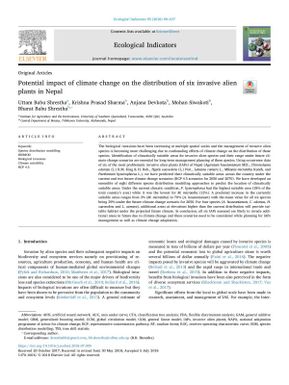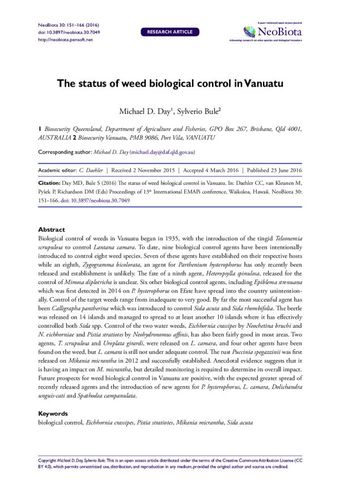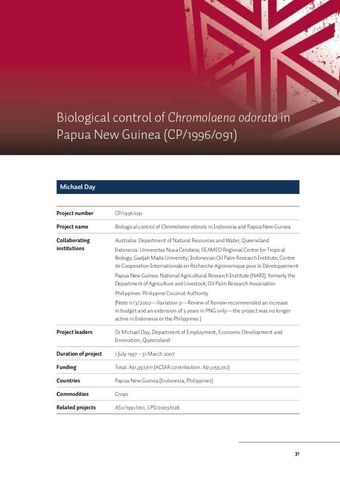Potential impact of climate change on the distribution of six invasive alien plants in Nepal.
- Description:
- The biological invasions have been increasing at multiple spatial scales and the management of invasive alien species is becoming more challenging due to confounding effects of climate change on the distribution of those species. Identification of climatically suitable areas for invasive alien species and their range under future climate change scenarios areessentialfor long-term management planningofthesespecies. Using occurrence data of six of the most problematic invasive alien plants (IAPs) of Nepal (Ageratum houstonianum Mill., Chromolaenaodorata (L.) R.M. King & H. Rob., Hyptis suaveolens (L.) Poit., Lantana camara L., Mikania micrantha Kunth, and Parthenium hysterophorus L.), we have predicted their climatically suitable areas across the country under the current and two future climate change scenarios (RCP 4.5 scenarios for 2050 and 2070). We have developed an ensemble of eight different species distribution modelling approaches to predict the location of climatically suitable areas. Under the current climatic condition, P. hysterophorus had the highest suitable area (18% of the total countrys area) while it was the lowest for M. micrantha (12%). A predicted increase in the currently suitable areas ranges from 3% (M. micrantha) to 70% (A. houstonianum) with the mean value for all six species being 29% under the future climate change scenario for 2050. For four species (A. houstonianum, C. odorata, H.suaveolens and L. camara), additional areas at elevations higher than the current distribution will provide suitable habitat under the projected future climate. In conclusion, all six IAPs assessed are likely to invade additional areas in future due to climate change and these scenarios need to be considered while planning for IAPs management as well as climate change adaptation.
- Collections:
- Secretariat of the Pacific Regional Environment Programme (SPREP)
- Content partner:
- Secretariat of the Pacific Regional Environment Programme (SPREP)
- Availability:
- Not specified
-
Copyright status: All rights reservedFind out more about what you are able to do with this itemThis item is all rights reserved, with means you'll have to get permission from Secretariat of the Pacific Regional Environment Programme (SPREP) before using it. For more information, please see our use and reuse page.What can I do with this item?Non-infringing useNZ copyright law does not prevent every use of a copyright work, and this item may be hosted by an international institute or organisation. You should consider what you can and cannot do with a copyright work.No sharingYou may not copy and/or share this item with others without further permission. This includes posting it on your blog, using it in a presentation, or any other public use.No modifyingYou are not allowed to adapt or remix this item into any other works.No commercial useYou may not use this item commercially.
Related items
Welcome and warm Pasifik greetings
The information on this site has been gathered from our content partners.
The names, terms, and labels that we present on the site may contain images or voices of deceased persons and may also reflect the bias, norms, and perspective of the period of time in which they were created. We accept that these may not be appropriate today.
If you have any concerns or questions about an item, please contact us.


